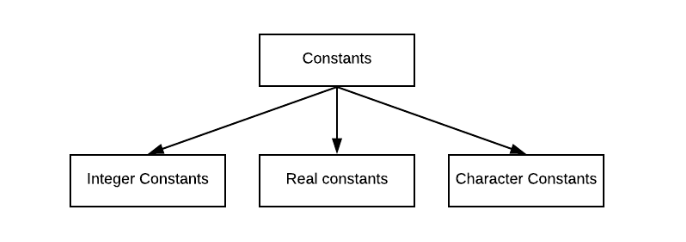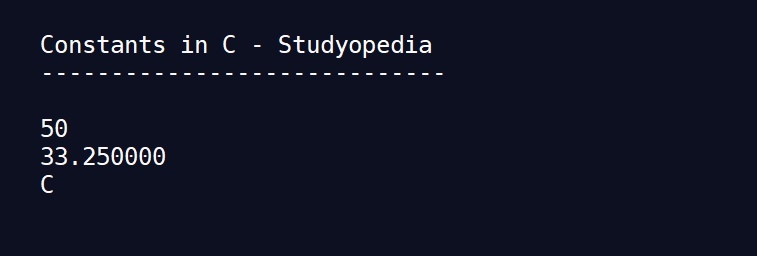27 Aug Constants in C Language
Constants in C language are the values that cannot be modified once they are defined. After definition, they are fixed in a program.
Before moving further, we’ve prepared a video tutorial to understand what are constants in C:
There are primarily three types of constants, namely integer, real, and character constants.

Details about these are given as follows:
Integer Constants
The different rules for constructing integer constants are:
- There should be at least one digit in the integer constant.
- There should be no decimal points.
- The integer constant can be positive or negative.
- If there is no sign specified before the integer constant, it is assumed to be positive.
- There should be no commas and blanks in the integer constant.
- Some examples of integer constants are 23,-55,+55, etc.
Real Constants
Real constants or floating point constants can be written in two forms: Fractional form or Exponential form.
The different rules for constructing real constants in the fractional form are:
- There should be at least one digit in the real constant.
- There should be a decimal point.
- The real constant can be positive or negative.
- If there is no sign specified before the real constant, it is assumed to be positive.
- There should be no commas and blanks in the real constant.
- Some examples of real constants in the fractional form are 23.5, +66.87, -75.23, etc.
The exponential form is usually used when the real constants are either too large or too small. In this form, the constants are represented in two parts. The part before e is called mantissa and the part after e is called an exponent.
The different rules for constructing real constants in the exponential form are:
- The e should separate the mantissa and exponent.
- The mantissa can be positive or negative.
- If there is no sign specified before the mantissa, it is assumed to be positive.
- There should be at least one digit in the exponent. It is assumed to be positive by default.
- Some examples of real constants in the exponential form are +2.3e5, -6.6e-7, -7.5e3, etc.
Character Constants
These consist of a single character such as an alphabet, digit, or special character enclosed within inverted commas.
The different rules for constructing character constants are:
- The maximum length of a character constant is one character.
- The character constant should be enclosed with left-pointing inverted commas.
- Any alphabet, digit, or special character can be a character constant.
Some examples of character constants are ‘A’, ‘7’, ‘%’ etc.
A coding example of constants in C language is:
|
1 2 3 4 5 6 7 8 9 10 11 12 13 14 15 16 17 18 |
#include < stdio.h > int main(void) { const int a = 50; // Integer constant const float b = 33.25; // Real constant const char c = 'C'; // Character constant printf("Constants in C - Studyopedia\n"); printf("----------------------------\n"); printf("%d\n", a); printf("%f\n", b); printf("%c\n", c); return 0; } |
The output obtained for the above code is:

If you liked the tutorial, spread the word and share the link and our website Studyopedia with others:
Read More:


No Comments